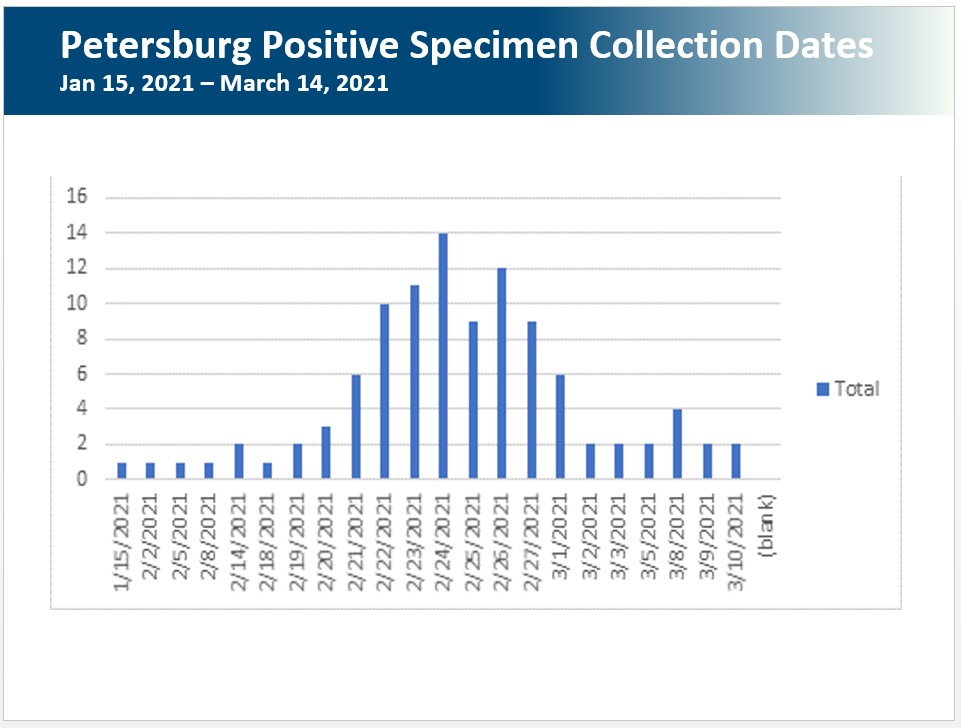
State health officials say Petersburg’s recent outbreak of COVID-19 looked similar to the rapid spread seen in other parts of rural Alaska that hadn’t already seen widespread infection.
Those state officials held an online presentation this week to review the outbreak in this Southeast Alaska community and urge continued testing and vaccination.
State epidemiologist Dr. Joe McLaughlin compared the spread to a wildfire in a dry forest.
“When you have a community that has not seen much activity like Petersburg, once the virus starts to take a foothold in the community it can spread like wildfire and it can spread very quickly, and you can have multiple introductions,” McLaughlin said. “And so if you have multiple introductions, you know one region of the community, and another region and another region, then you’ve got multiple outbreaks that are sort of festering on their own and that can really result in widespread transmission within that community fairly quickly.”
Petersburg started seeing an increase in cases in mid-February and hit a peak of new cases reported February 24th. The number of active cases was its highest, at 68, on March 3rd. Health officials say the virus was brought into Petersburg by travelers and spread through close contact at bars, restaurants, daycares and schools. Local schools went to online learning and some businesses closed temporarily or paused in-person service. Since that peak, case counts have been dropping and by this week the number of active cases was down to 10.
The state’s chief medical officer Dr. Anne Zink encouraged people to continue testing to reduce any further spread.
“Now that your numbers are down this is the time to clean the cases out,” Zink said. “This is the time to do a lot of testing, surveillance testing, identify there’s a lot of people who are asymptomatic or mildly symptomatic that may not think that they are. I would just say it’s really easy to gather and to not worry about COVID if COVID isn’t spreading, particularly in a community like Petersburg, where you’re an island community and you’ve had that for so long. But now that you have it seeded in. Don’t let it fester because it just kind of then percolates for a long time and it just continues to impact people’s health and well-being.”
Zink also praised Petersburg’s vaccination numbers, especially among people 65 and older. Nearly 90 percent of that population in Petersburg is fully vaccinated and Zink thought that was likely among the highest rates in Alaska and possibly the nation. She also encouraged others who have not yet gotten their shot.
“Ultimately that’s our goal right?” she said. “We just don’t want people to get sick. You get a little runny nose, OK so be it, but we just don’t want people to get sick and die and that’s what we see all the time. I had two clinical patients recently, one was vaccinated, one wasn’t. She was being admitted to the hospital to get oxygen and he also tested positive and was totally fine sitting at the bedside. These vaccines work and so it’s great to see that uptake (for vaccine in Petersburg) and excited to see even more of that as we are heading into the summer with more people visiting and we don’t know their vaccine status. So this is a way to protect ourselves and our community as we move into summer.”
She and others also encouraged continued use of masks and social distancing, calling these measures “speedbumps” for a spreading virus. State doctors and nurses also answered community questions on masking, COVID testing and treatment.
Since the start of the pandemic Petersburg’s reported 159 COVID cases. 145 of those have been in Petersburg residents, about 4.5 percent of the local population.
Listen to the entire presentation and see the powerpoint slides here or view the videoconference here.
Download the powerpoint from the Alaska Department of Health and Social Services here:









